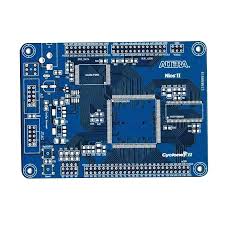Streamlined Guide to Custom Circuit Board Assembly Solutions
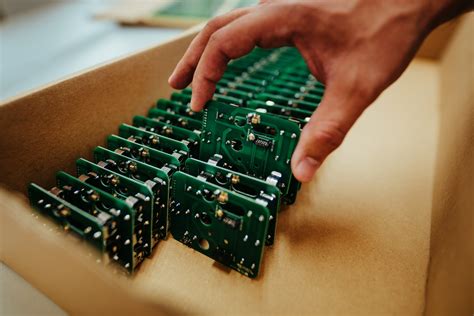
Key Takeaways
Custom circuit board assembly, commonly referred to as PCB assembly or PCBA, plays a crucial role in the electronics manufacturing sector. Understanding the essentials of PCB assembly ensures organizations can effectively integrate technology into their designs. One of the main takeaways is the significance of adopting best practices that not only streamline the process but also enhance overall productivity. For instance, utilizing automation during the assembly process can significantly reduce human error and boost efficiency.
Furthermore, innovative technologies, such as advanced soldering techniques and smart inspection systems, have transformed traditional methods of assembly. These innovations increase precision and help maintain stringent quality control measures. It’s essential for businesses to stay abreast of these technologies to gain a competitive edge in the market.
Moreover, it’s vital to recognize the diverse applications of custom circuit board assembly; from consumer electronics to medical devices, each sector requires tailored solutions that meet specific requirements. Doing so not only fosters enhanced performance but also ensures long-lasting product reliability.
“Innovation in PCBA processes is not just an option; it’s a necessity for businesses aiming to thrive in a fast-paced tech environment.” Thus, investing in research and development for improved circuit board assembly methods will undoubtedly pay dividends in efficiency and effectiveness for any organization involved in electronics manufacturing.
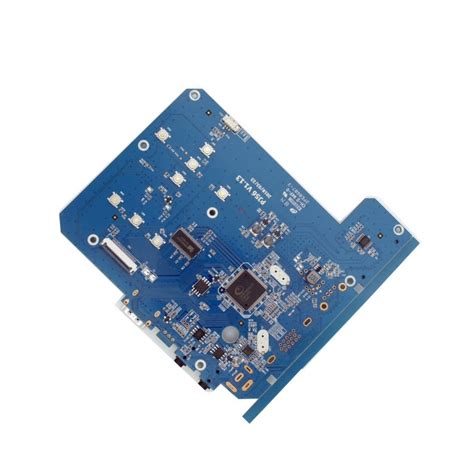
Introduction to Custom Circuit Board Assembly
In the rapidly evolving world of electronics, custom circuit board assembly (often referred to as PCBA) plays a critical role in the development and production of various devices. The process involves the meticulous assembly of printed circuit boards (PCBs) that serve as the backbone for electronic components. Understanding the nuances of pcb assembly is essential for manufacturers aiming to optimize production and ensure high-quality results. The demand for customized solutions has led to innovative practices that refine each step of pcba, from component placement to soldering techniques. In today’s market, embracing advanced technologies such as automated assembly and precision inspection not only enhances efficiency but also reduces errors during the manufacturing process. By leveraging these strategies, businesses can significantly improve their output while meeting diverse application needs across industries from consumer electronics to automotive systems. The integration of such cutting-edge innovations positions companies at the forefront of custom circuit board assembly, ensuring they remain competitive in this dynamic environment.
Key Processes in Circuit Board Assembly
The process of pcb assembly, often referred to as PCBA, involves several critical stages that are essential for creating high-quality electronic products. It begins with design specification, where engineers meticulously outline the requirements of the circuit board, including component types, size, and placement. Once the design is finalized, the next step is component procurement, where electronic components are sourced from suppliers. This is followed by solder paste application, a crucial procedure that ensures that solder paste is evenly spread on the designated pads of the printed circuit board (PCB).
Next comes pick and place, in which automated machinery precisely positions each electronic component onto its respective pad, significantly reducing human error and enhancing assembly speed. After placement, the assemblies undergo reflow soldering, where heat is applied to melt the solder paste, creating strong electrical connections. Following this thermal process, it’s vital to conduct thorough inspections—both manual and automated—to ensure that all components are correctly placed and soldered. These inspections often leverage advanced technologies like automated optical inspection (AOI) to identify defects at an early stage.
To conclude this critical phase, careful consideration of assembly testing methods should be undertaken to validate that each PCBA functions as intended before it moves onto further stages of production or integration into larger systems. Effectively managing these processes not only elevates product quality but contributes immensely to operational efficiency in custom circuit board assembly solutions.
Best Practices for Efficient Assembly
When it comes to pcb assembly, embracing best practices is essential for enhancing both efficiency and quality in the production of custom circuit boards. Firstly, it is crucial to have a well-defined design for manufacturability (DFM) protocol, which ensures that the pcba process is optimized from the outset. Utilizing automated assembly equipment can significantly reduce human error and increase component placement accuracy, leading to consistent results. Additionally, regular training for operators on the latest techniques and machinery will help maintain high standards of workmanship throughout the assembly process.
Moreover, maintaining an organized workflow can facilitate smoother transitions between different phases of assembly. Implementing lean manufacturing principles will minimize waste and expedite production timelines without sacrificing quality. Furthermore, precise inventory management systems are vital to prevent delays caused by component shortages. By keeping an eye on inventory levels and understanding lead times for critical components, manufacturers can plan their assembly schedules more effectively.
Finally, integrating quality control checks at various stages of pcb assembly will help identify issues early in the process, reducing costly rework or defects later on. Techniques such as automated optical inspection (AOI) and functional testing provide valuable feedback and enhance overall product reliability. In essence, adopting these strategies fosters a culture of continuous improvement that not only streamlines pcba operations but also positions manufacturers for success in a competitive landscape.
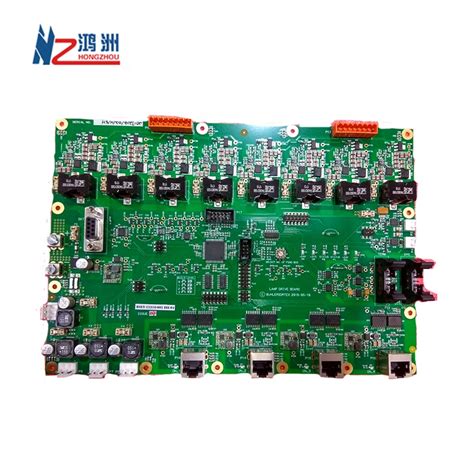
Innovative Technologies Transforming Assembly Solutions
In the ever-evolving landscape of pcb assembly, innovative technologies are playing a pivotal role in enhancing the efficiency and quality of pcba processes. Advanced automation, for instance, significantly reduces human error and increases production speed. This is achieved through robotic arms that precisely place components on circuit boards, ensuring a higher degree of accuracy than manual assembly. Additionally, the integration of artificial intelligence allows for real-time monitoring of the assembly line, quickly identifying areas that require adjustments or improvements. This not only streamlines workflow but also optimizes resource allocation, which is crucial for meeting tight production deadlines in various applications.
Moreover, emerging technologies like 3D printing are revolutionizing prototype development in pcb assembly. This method enables rapid prototyping and testing of circuit designs, leading to shorter development cycles and faster time-to-market for new products. Enhanced software tools also play a critical role by providing designers with advanced simulations to predict performance outcomes before actual production begins. The implementation of Internet of Things (IoT) devices within manufacturing processes further supports data-driven decision-making, allowing manufacturers to analyze performance metrics and make informed adjustments on-the-fly.
As these cutting-edge technologies continue to develop and integrate into custom circuit board assembly, they not only promise increased productivity but also pave the way for innovative applications across various industries—from consumer electronics to medical devices—demonstrating the transformative impact of technology on pcba solutions.
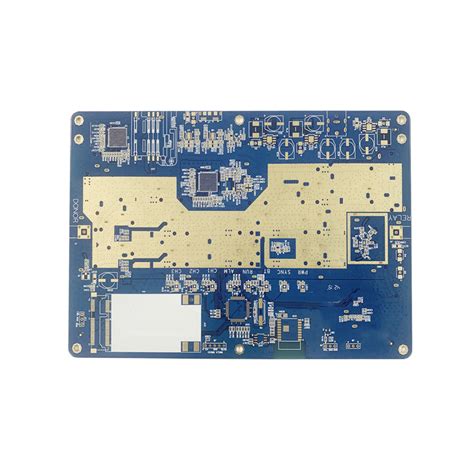
Quality Control Measures in Custom Assemblies
Effective quality control measures are crucial in the pcb assembly process to ensure that every product meets the required specifications and standards. The reliability and functionality of a pcba depend on meticulous inspection and testing throughout the assembly stages. One fundamental practice involves visual inspections, where trained personnel examine boards for physical defects such as misaligned components, soldering flaws, or missing parts. Additionally, utilizing automated optical inspection (AOI) systems has become increasingly common; these machines can detect inconsistencies swiftly and accurately, thereby reducing human error.
Moreover, performing electrical tests is another pivotal aspect of quality control. Functional testing verifies that the pcba operates as intended, while in-circuit testing checks for individual component functionality on the board. Besides these practices, implementing a robust traceability system ensures that each component’s origin can be tracked—providing insights into quality and supply chain integrity.
Furthermore, continuous improvement is encouraged through data analysis collected during these quality assessments. By analyzing defect rates and patterns, companies can refine their processes and materials, leading to more efficient pcb assembly operations. Ultimately, a well-structured quality control framework not only reduces the risk of product failures but also enhances customer satisfaction by ensuring that high-quality standards are consistently met throughout each project.
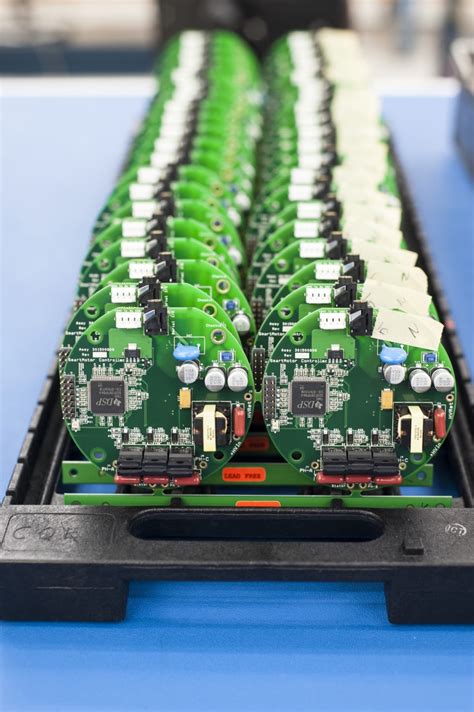
Applications of Custom Circuit Board Assembly
Custom circuit board assembly (PCB assembly), often referred to as PCBA, serves a multitude of applications across various industries due to its versatility and efficiency. In the consumer electronics sector, PCBA is foundational for devices such as smartphones, tablets, and wearable technology, where compact design and high-density circuitry are crucial. Similarly, in the automotive industry, custom circuit board assembly is vital for integrating advanced driver-assistance systems (ADAS) and electric vehicle components, enhancing both performance and safety.
In industrial automation, PCB assembly solutions are deployed in control systems that govern machinery operations. These assemblies are designed to withstand harsh environments while maintaining functionality and reliability. Additionally, the medical field has increasingly relied on custom circuit boards for devices like diagnostic tools and monitoring equipment, where precision and compliance with stringent standards are non-negotiable.
To elaborate further on these applications, refer to the table below:
| Industry | Applications | Key Features |
|---|---|---|
| Consumer Electronics | Smartphones, Tablets, Wearables | Compact design, high-density circuits |
| Automotive | ADAS systems, Electric vehicle components | Safety-enhancing features |
| Industrial Automation | Machinery control systems | Durability in harsh environments |
| Medical Devices | Diagnostic tools, Patient monitoring | Compliance with medical standards |
Custom circuit board assembly (PCBA) is not only limited to these sectors but is also applicable in telecommunications for network infrastructure components and in aerospace for navigation systems where reliability is paramount. As technology advances, the scope of PCB assembly continues to expand into emerging fields such as IoT (Internet of Things) devices and renewable energy systems.
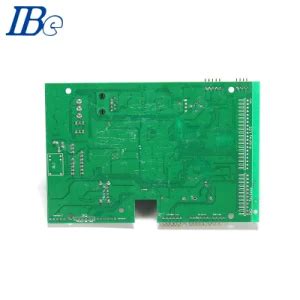
Future Trends in Circuit Board Manufacturing
As the demand for advanced electronics continues to rise, the pcb assembly industry is poised for significant transformation. Emerging trends in custom circuit board assembly are heavily influenced by advancements in materials, miniaturization, and automation. One of the most notable trends is the increased use of flexible circuit boards which offer greater adaptability in design and functionality. This innovation allows for more compact assemblies, which is essential for modern devices that require space efficiency without compromising performance.
Additionally, automated systems are revolutionizing the pcba process by enhancing throughput and minimizing human error. Robotics and AI-driven solutions are not only making assembly faster but are also improving the precision of soldering and component placement. As manufacturers embrace Industry 4.0 principles, real-time data analytics will become crucial in monitoring production processes, allowing for immediate adjustments and improvements.
Moreover, sustainability is gaining importance within the circuit board manufacturing sector. Companies are increasingly looking at environmentally friendly materials and methods to reduce waste and energy consumption during production. The shift toward green electronics not only helps meet regulatory requirements but also appeals to eco-conscious consumers.
In conclusion, the future of circuit board manufacturing points to more efficient processes, integrated smart technologies, and a commitment to sustainability—all pivotal elements that will shape how pcb assembly solutions evolve to meet diverse market needs.
Conclusion
In summary, the world of custom circuit board assembly, or pcba, is ever-evolving, driven by innovations and the need for efficiency. By implementing best practices and adopting innovative technologies, companies can enhance their production capabilities, ensuring more reliable pcb assembly processes. The integration of advanced quality control measures ensures that each assembly meets stringent standards, which is crucial in industries ranging from consumer electronics to automotive applications. As manufacturers look toward future trends in circuit board manufacturing, understanding the dynamics of custom assemblies and exploring tailored solutions will play a pivotal role in meeting market demands. Emphasizing flexibility and responsiveness can lead to more effective and sustainable practices, ultimately benefiting both businesses and consumers alike.
FAQs
What is custom circuit board assembly (PCBA)?
Custom circuit board assembly, commonly referred to as PCBA, involves the integration of electronic components onto a printed circuit board (PCB), creating a functional electronic device tailored to specific needs.
Why is PCB assembly important in electronics?
The pcb assembly process is crucial as it lays the foundation for all electronic products. A well-assembled PCB ensures reliable performance, longevity, and efficiency in the final application.
What processes are involved in PCB assembly?
The primary processes include surface mount technology (SMT), through-hole technology, and inspection methods. These steps ensure that components are properly placed and soldered onto the PCB, leading to high-quality assemblies.
What technologies are used in modern PCBA?
Advanced technologies such as automated soldering machines, pick-and-place systems, and 3D inspection devices are integral to enhancing the PCBA process. They improve accuracy and efficiency significantly.
How do I ensure quality control in PCBA?
Implementing rigorous quality control measures such as visual inspections, functional testing, and automated Optical Inspection (AOI) helps maintain high standards in pcb assembly, reducing the likelihood of defects.
For more information on optimizing your custom circuit board assembly process and to explore comprehensive solutions for your electronic needs, please click here: Andwin PCB Assembly.



